2-Pyridinethione
Synonym(s):2-Pyridinethiol;2-Pyridyl mercaptan
- CAS NO.:2637-34-5
- Empirical Formula: C5H5NS
- Molecular Weight: 111.16
- MDL number: MFCD00006285
- EINECS: 220-131-9
- SAFETY DATA SHEET (SDS)
- Update Date: 2025-01-27 09:38:02
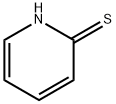
What is 2-Pyridinethione?
Chemical properties
2-Mercaptopyridine is yellow crystalline powder
The Uses of 2-Pyridinethione
Employed as a ligand in metal complexes.1,2
The Uses of 2-Pyridinethione
2-Mercaptopyridine Can be used to coat porous media to purify plasmid DNA.
The Uses of 2-Pyridinethione
Employed as a ligand in metal complexes. It can be used to coat porous media to purify plasmid DNA.
Definition
ChEBI: Pyridine-2-thiol is pyridine substituted at C-2 by a sulfanyl group. It has a role as a fluorescence quencher and an allergen. It is a member of pyridines and an aryl thiol.
What are the applications of Application
2-Mercaptopyridine is a ligand in metal complexes
Purification Methods
If impure, dissolve in CHCl3, wash with dilute AcOH, H2O, dry (MgSO4), evaporate under reduced pressure and recrystallise the residue from *C6H6 or H2O. 2-Methylmercaptopyridine (b 100-104o/33mm, pK2 0 3.59) was formed by treatment with MeI/NaOH. [Albert & Barlin J Chem Soc 2394 1959, Phillips & Shapiro J Chem Soc 584 1942, Beilstein 21 H 45, 21 III/IV 373, 21/7 V 147.]
Properties of 2-Pyridinethione
| Melting point: | 127-130 °C(lit.) |
| Boiling point: | 184.9±23.0 °C(Predicted) |
| Density | 1.161 (estimate) |
| refractive index | 1.5605 (estimate) |
| Flash point: | 125°C |
| storage temp. | 2-8°C |
| solubility | Slightly soluble in chloroform, methanol and dimethyl sulfoxide. |
| form | Crystalline Powder |
| pka | pK1:-1.07(+1);pK2:10.00(0) (20°C) |
| color | Yellow to brownish |
| Water Solubility | 50 g/L (20 ºC) |
| Sensitive | Air Sensitive |
| BRN | 105758 |
| Stability: | Stable. Incompatible with strong bases, strong oxidizing agents. |
| CAS DataBase Reference | 2637-34-5(CAS DataBase Reference) |
| NIST Chemistry Reference | 2(1H)-Pyridinethione(2637-34-5) |
| EPA Substance Registry System | 2-Mercaptopyridine (2637-34-5) |
Safety information for 2-Pyridinethione
| Signal word | Warning |
| Pictogram(s) |
 Exclamation Mark Irritant GHS07 |
| GHS Hazard Statements |
H315:Skin corrosion/irritation H319:Serious eye damage/eye irritation H335:Specific target organ toxicity, single exposure;Respiratory tract irritation |
| Precautionary Statement Codes |
P261:Avoid breathing dust/fume/gas/mist/vapours/spray. P304+P340:IF INHALED: Remove victim to fresh air and Keep at rest in a position comfortable for breathing. P305+P351+P338:IF IN EYES: Rinse cautiously with water for several minutes. Remove contact lenses, if present and easy to do. Continuerinsing. P405:Store locked up. |
Computed Descriptors for 2-Pyridinethione
| InChIKey | WHMDPDGBKYUEMW-UHFFFAOYSA-N |
2-Pyridinethione manufacturer
JSK Chemicals
Jaagruthi Lifesciences
New Products
3-Iodophenylacetic acid 3-Pyridineacetonitrile, α-hydroxy- 2-Propanamine, 1-chloro-, hydrochloride (9CI) 3-(hexyloxy)-4-(pyridin-3-yl)-1,2,5-thiadiazole 2-Hexyn-1-ol Dibenzo-18-crown-6 Nickel(II) perchlorate hexahydrate, 98% 4-Bromophenylacetonitrile, 95% 3-Bromo-4-fluoroaniline, 97% Sodium tetraborate decahydrate, 98% Palladium(II) acetate, trimer, Pd 99% 4-Bromo-2-chlorotoluene, 97% N N Dimethylformamide Dimethyl Acetal (Dmf Dma) 2,3-Dichloro Benzoyl Cyanide [Side Chain] Bis(2-Chloroethyl) Amine Hydrochloride L-Glutamic Acid Diethyl Ester Hydrochloride 5-(Difluoromethoxy)-2-Mercaptobenzimidazole 1-Ethyl-3-(3-Dimethylaminopropyl)-Carbodiimide Hydrochloride [EDC Hcl] 1,4-Napthoquinone Bromoiodomethane Sodium Bicarbonate Methylene Dichloride (MDC) Ethyl Acetate Indole-3-Carbinol (I3C)Related products of tetrahydrofuran
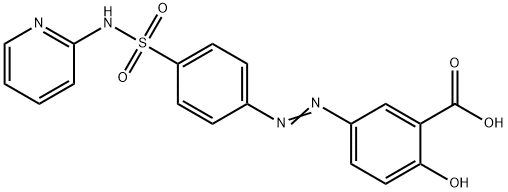


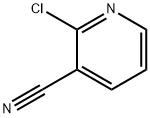

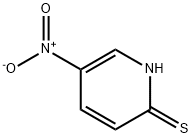
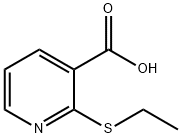
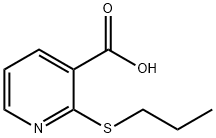
You may like
-
 2-Mercaptopyridine, 98% 2637-34-5 99%View Details
2-Mercaptopyridine, 98% 2637-34-5 99%View Details
2637-34-5 -
 2-Mercaptopyridine 98%View Details
2-Mercaptopyridine 98%View Details
2637-34-5 -
 2-Mercaptopyridine, 99% CAS 2637-34-5View Details
2-Mercaptopyridine, 99% CAS 2637-34-5View Details
2637-34-5 -
 2-Mercaptopyridine CAS 2637-34-5View Details
2-Mercaptopyridine CAS 2637-34-5View Details
2637-34-5 -
 2-Mercaptopyridine CAS 2637-34-5View Details
2-Mercaptopyridine CAS 2637-34-5View Details
2637-34-5 -
 Cyclohexane, (2-propynyloxy)- 67967-07-1 98+View Details
Cyclohexane, (2-propynyloxy)- 67967-07-1 98+View Details
67967-07-1 -
 3-Iodophenylacetic acid 1878-69-9 98+View Details
3-Iodophenylacetic acid 1878-69-9 98+View Details
1878-69-9 -
 132945-75-6 (S)-1-Boc-3-methanesulfonyloxy-pyrrolidine 98+View Details
132945-75-6 (S)-1-Boc-3-methanesulfonyloxy-pyrrolidine 98+View Details
132945-75-6
